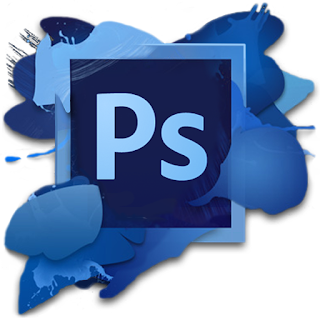Adobe Photoshop
Introducing Photoshop
Adobe Photoshop is a powerful graphic editing program that allows you to create and
manipulate images for print, the web, and other media. Photoshop is almost limitless in the
ability to manipulate and edit images, but don't let that scare you! We have created this guide
to help you learn and take advantage of the many feature of this program.
Destructive Edits - These edits alter or change the image information. A destructive edit
directly manipulates the image's pixels and therefore cannot or is very difficult to be reversed.
Non-Destructive Edits - Edits that do not directly affect the image’s pixels until the image
layers are flattened (by saving as a flattened image format or flattening layers), so one can
make alterations using non-destructive tools without losing any image quality or information.
Computer colour management
COLOR MODEL
A color model is an abstract mathematical model describing the way colors can berepresented as tuples of numbers, typically as three or four values or color components. When
this model is associated with a precise description of how the components are to be
interpreted (viewing conditions, etc.), the resulting set of colors is called color space. This
section describes ways in which human color vision can be modeled.
RGB color model
Media that transmit light (such as television) use additive color mixing with primary colors of
red, green, and blue, each of which stimulates one of the three types of the eye's color
receptors with as little stimulation as possible of the other two.
This is called "RGB" color space. Mixtures of light of these
primary colors cover a large part of the human color space and
thus produce a large part of human color experiences. This is
why color television sets or color computer monitors need only produce mixtures of red,
green and blue light. See Additive color.
Other primary colors could in principle be used, but with red, green and blue the largest
portion of the human color space can be captured. Unfortunately there is no exact consensus
as to what loci in the chromaticity diagram the red, green, and blue colors should have, so the
same RGB values can give rise to slightly different colors on different screens
CMYK COLOR MODEL
It is possible to achieve a large range of colors seen by humans by combining
cyan, magenta, and yellow transparent dyes/inks on a white substrate. These
are the subtractive primary colors. Often a fourth ink, black, is added to improve reproduction
of some dark colors. This is called "CMY" or "CMYK" color space.
The cyan ink absorbs red light but transmits green and blue, the magenta ink absorbs green
light but transmits red and blue, and the yellow ink absorbs blue light but transmits red and
green. The white substrate reflects the transmitted light back to the viewer. Because in
practice the CMY inks suitable for printing also reflect a little bit of color, making a deep and
neutral black impossible, the K (black ink) component, usually printed last, is needed to
compensate for their deficiencies. Use of a separate black ink is also economically driven
when a lot of black content is expected, e.g. in text media, to reduce simultaneous use of the
three colored inks. The dyes used in traditional colorphotographic prints and slides are much
more perfectly transparent, so a K component is normally not needed or used in those media.
GRAPHIC TYPES
Computer graphics are graphics created using computers and the representation of image data
by a computer specifically with help from specialized graphic
hardware and software.
The interaction and understanding of computers and interpretation of
data has been made easier because of computer graphics. Computer graphic development has
had a significant impact on many types of media and have revolutionized animation, movies
and the video game industry.
VECTOR GRAPHICS
Example showing effect of vector graphics versus raster (bitmap) graphics.Vector graphics
formats are complementary to raster graphics. Raster graphics is the representation of images
as an array of pixels and is typically used for the
representation of photographic images. Vector
graphics consists in encoding information about
shapes and colors that comprise the image, which
can allow for more flexibility in rendering. There
are instances when working with vector tools and formats is best practice, and instances when
working with raster tools and formats is best practice. There are times when both formats
come together. An understanding of the advantages and limitations of each technology and
the relationship between them is most likelytoresultefficientand effective use of tools.
RASTER GRAPHICS
Raster graphics are digital images created or captured (for example, by scanning in a photo)
as a set of samples of a given space. A raster is a grid of x and y coordinates on a display
space. (And for three-dimensional images, a z coordinate.) A raster image file identifies
which of these coordinates to illuminate in monochrome or color values. The raster file is
sometimes referred to as a bitmap because it contains information that is directly mapped to
the display grid.
A raster file is usually larger than a vector graphics image file. A raster file is usually difficult
to modify without loss of information, although there are software tools that can convert a
raster file into a vector file for refinement and changes. Examples of raster image file types
are: BMP, TIFF, GIF, and JPEG files.








Comments
Post a Comment